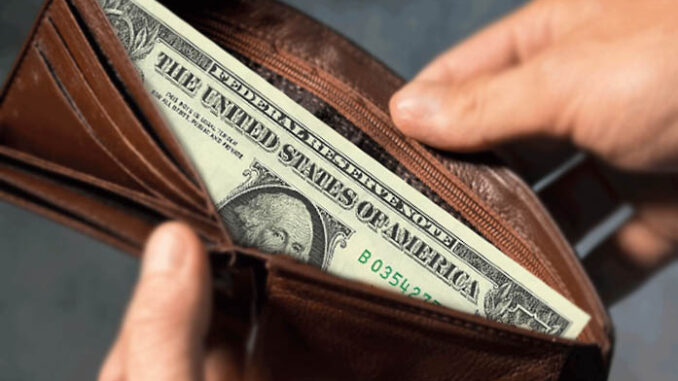
Traditionally, the economy has been the main force that drives voters to support or oppose political candidates at both the federal and state levels.
In 1980, candidate Ronald Reagan applied this principle successfully against incumbent Jimmy Carter, during his famous debate speech, Are you bettter off today than four years ago?
Twelve years later, Bill Clinton adviser, James Carville, came up with the phrase “It’s the economy, stupid,” which was used successfully by Clinton against incumbent George H. W. Bush.
As expected, both Trump and Biden have been using the “better off” question and answering it yes or no, depending on who is doing the answering.
A recent opinion piece in the Wall Street Journal mentions that there are signs that we may be heading for a period of stagflation, and issues the following warning:
“Slower growth with rising prices is a sign of stagflation, a political killer.”
To better understand the importance of that warning, let us look at what economists consider a healthy inflation and growth environment.
It is generally accepted that an inflation rate of around 2% is healthy, if there is good productivity growth, as in a GDP growth of around 3% to 4%. What we are seeing now is totally different.
What the recently-released first quarter figures indicate is a GDP growth of 1.6%, much lower than ideal, and an inflation rate of 3.4%, much higher than ideal. This combination fits the traditional definition of stagflation, which is not good for incumbents.
Personally, most people regard the inflation of the last four years as much higher than the official rate, especially if they have bought a gallon of milk for their children or a gallon of gas for their car.
The official GDP growth of 1.6% is worse than it appears because of where the growth came from. According to the WSJ opinion piece, most of that growth came from consumer spending and very little from investing. Furthermore, the WSJ piece continues, a lot of that investment was government created and cannot be counted on to help in the near future.
“Much of what non-housing investment there is may result from government subsidies, which means no one should assume it will contribute to productivity growth or future GDP gains. State and local government spending was another of the strong points in this report, but that also isn’t a source of future productivity gains.”
Arizonan voters are keenly aware of that part about state and local government spending, since we are facing significant spending cuts. This was recently brought to our attention in an Arizona Daily Independent article, which may be read by clicking HERE.
If stagflation continues beyond the first quarter, it could have a significant effect on how campaigns are conducted and how voters decide what candidates to support.

“If stagflation continues beyond the first quarter, it could have a significant effect on how campaigns are conducted and how voters decide what candidates to support.”
….And the “useful idiots” will vote for the left because they promise more free stuff.
not sure what we’re gonna be able to pull from biden fires nationwide
driving off cliff time and time again
we’re gonna need massive cleanup
and need to put bill squarely on those who did it – and not taxpayers
seizing assets works for me
Just about everyone who shops knows that this idiot in the white house is not good for the economy and the American dollar! At least the economy grew while Trump was President and I expect it will do so again after he is elected!